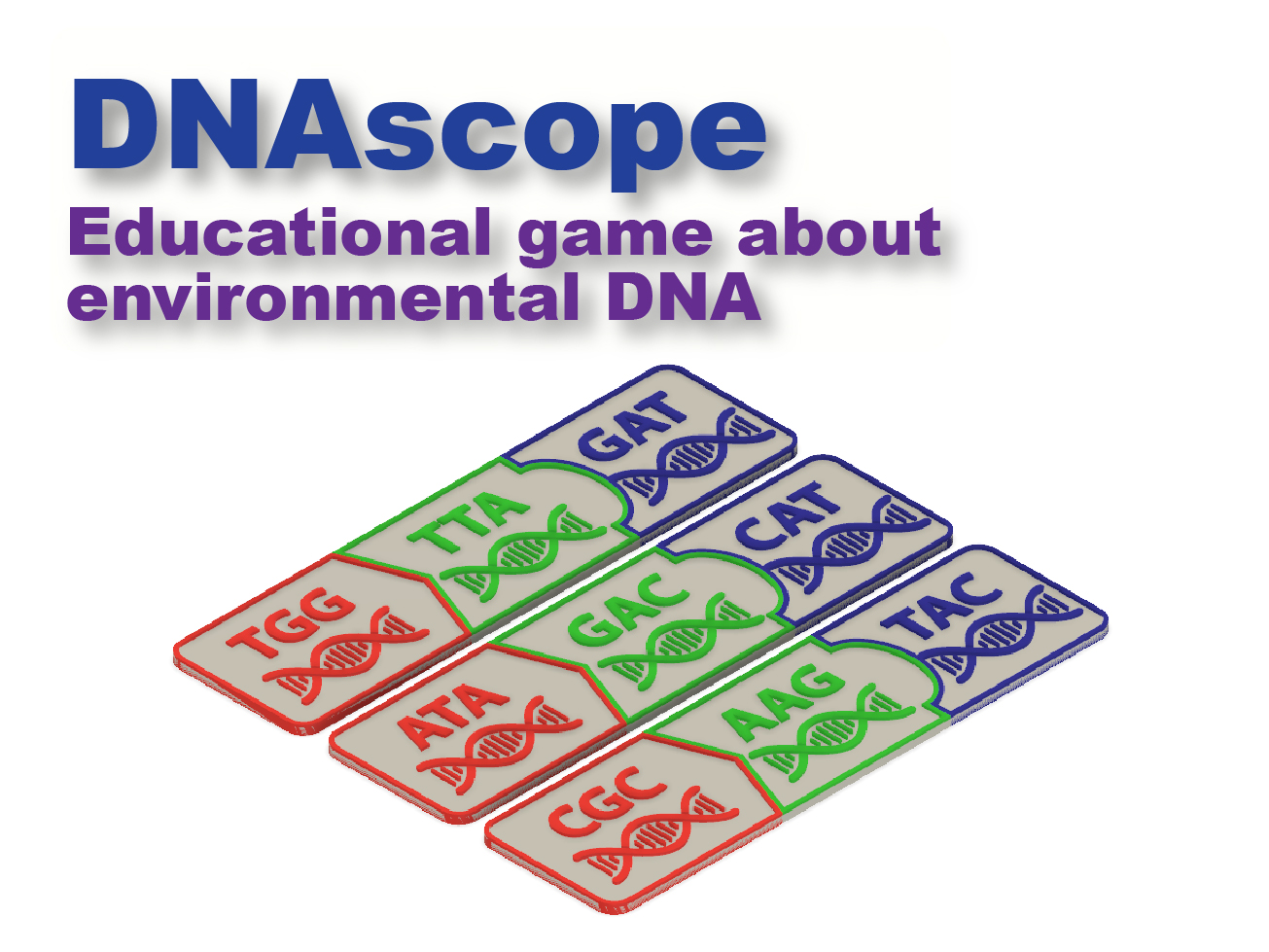
DNAscope: Learn about DNA
prusaprinters
<p>DNAscope is an educational game that allows students to assemble the sequence of DNA fragments and identify the species of animal or plant that this DNA belongs to. In total 27 different genetic signatures (animals/plants) are currently supported. The activity is performed by having young scientists assemble 3 puzzle pieces into a complete puzzle, representing the gene sequence of an animal. Each puzzle piece contains a short DNA sequence. When this sequence is entered on our <a href="https://scopeseducation.org/dnascope_en/" target="_blank">website</a>, it displays the image of an animal specific to that DNA sequence combination.</p> <p>This activity was developed to improve students’ understanding that DNA is the molecule that contains the instructions for life.</p> <p><b>Paper version of this activity </b>, can be found <a href="http://scopeseducation.org/wp-content/uploads/SCOPES_Puzzle_Pieces_en_web_only.pdf" target="_blank">here.</a></p> <p><u><b>Background</b></u></b></p> <p>Humans share 99% of our genetic information with chimpanzees, one of our nearest evolutionary ancestors. Ask your kids if they can list some differences between humans and chimps. How can our genetic information (DNA) be so similar but we look so different? This activity provides a way to explain that the instructions for how a cell, and more broadly, a human or any animal is built is encoded by our DNA, which can be envisioned as a long string of four letters (A T C and G).</p> <p>Some parts of this code are similar or conserved between species and other segments are unique to a single species. Organisms are constantly interacting with their surroundings and leave behind traces of their DNA within feces, mucus, hair, leaves, roots or shed skin. Collectively, this is referred to as environmental DNA (eDNA) and can be purified from water, soil or even air. The subsequent analysis allows scientists to monitor the different species living in or transiting through an area even when the animal or plant is long gone.</p> <p><b>To make this more of a game, you can bury the pieces in sand or dirt and have your kids dig them up to simulate finding DNA in the ground.</b></p> <p>This version of DNAscope is independent of our <a href="https://www.prusaprinters.org/prints/27938-boxscope-run-your-own-biological-experiments" target="_blank">boxSCOPE</a> case. For more information about boxSCOPE please see our other prints.</p> <h3>Print instructions</h3><p>Optimally, the pieces should be printed in two colors, so that the raised DNA sequence and puzzle piece borders are a different color than the main puzzle piece. In PrusaSlicer this can be accomplished by setting the point at which you want to perform a filament change. I would recommend picking two colors that provide good contrast.</p> <p>For a short tutorial on color changing without a multi-material printer, check out this <a href="https://www.youtube.com/watch?v=F0IF5PAH7gs" target="_blank">short clip</a> from Prusa Printers.</p> <p><b>Paper version of this activity </b>, can be found <a href="http://scopeseducation.org/wp-content/uploads/SCOPES_Puzzle_Pieces_en_web_only.pdf" target="_blank">here.</a></p>
With this file you will be able to print DNAscope: Learn about DNA with your 3D printer. Click on the button and save the file on your computer to work, edit or customize your design. You can also find more 3D designs for printers on DNAscope: Learn about DNA.
